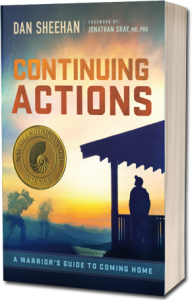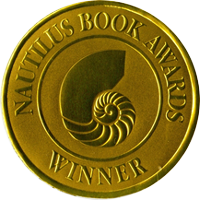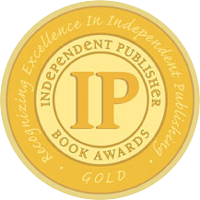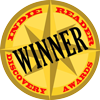Continuing Actions Chapter 5
“Wherever the poetry of myth is interpreted as biography, history, or science, it is killed. The living images become only remote facts of a distant time or sky. Furthermore, it is never difficult to demon- strate that as science and history mythology is absurd. When a civilization begins to interpret its mythology this way, the life goes out of it, temples become museums, and the link between the two perspectives is dissolved. . . .
To bring the images back to life, one has to seek, not interesting applications to modern affairs, but illuminating hints from the inspired past. When these are found, vast areas of half-dead iconography disclose again their permanently human meaning.”—Joseph Campbell, The Hero with a Thousand Faces, p.213
AS EXPLAINED IN THE LAST CHAPTER, war has the seemingly mythic ability to change a person. The chasm created by the different combat experiences of the conscious and unconscious minds fuels this change and persists long after we come home. Is this a new phenomenon? Something having to do with the speed and lethality of modern war? Or are modern warriors just more susceptible to it than their predecessors?
No.
War has always come home with those who fight. It echoes in our lives long after we’ve left the theater of combat as part of a basic human pattern. Understanding how deeply this pattern is ingrained in us is essential if we are to quiet these echoes and readjust to peace. It is an aspect of the warrior’s journey we have been led to believe we can ignore if we are strong enough. The persistence of this false belief leaves us exposed to unnecessary, and predictable, suffering.
I say predictable because the challenges of coming home have been known for thousands of years. We see them reflected in modern works of art and literature but their origins run much deeper than that. These are universal human experiences that disparate civilizations throughout history considered important enough to enshrine in their cultural mythology. Joseph Campbell explains the value of this information in his book, The Power of Myth:
“These bits of information from ancient times, which have to do with the themes that have supported human life, built civilizations, and informed religions over the millennia, have to do with deep inner problems, inner mysteries, inner thresholds of passage, and if you don’t know what the guide signs are along the way, you have to work it out yourself.” (Campbell, p.2)
Myths can show us the archetypal warrior’s journey. But they only provide general guidance for how to approach these universal human experiences—not specifics. The details contained in myth are metaphorical representations of cultural beliefs and customs from ancient civilizations that may, or may not, be recognizable to us.
Does it help the modern warrior to know that Hercules knocked out the Twelve Labors and then, after returning home, killed his friend, accidentally killed a boy, then eventually got killed after shooting a centaur while it was raping his wife? Or that, after coming home bearing his prize, Prometheus had his liver ripped out daily by an eagle as punishment for stealing fire from the gods and giving it to his people? Or that Odysseus spent as long struggling to get home as he did in actual combat? No, the details are unimportant. What is important, however, is to note that the challenges these warriors faced did not end on the battlefield.
They followed them home.
But myths are valuable to us because we need their general guidance, first. Remember, we’re still in the mission-planning phase of this operation. We’re studying historical battles in the hopes we can learn something that will help us in the future. We need this background knowledge because we’ve only just now been informed these inner battles even exist. We’ve got some catching up to do before we can figure out what to do about them.
At this stage we need to conduct our reconnaissance—or as Campbell puts it in the quote that begins this chapter, to seek “. . . illuminating hints from the inspired past.” The specifics of what we’re facing can only become clear once we comprehend the archetypal warrior’s experience as recorded in myths. The value of this reconnaissance is that, once we understand the full scope of the universal warrior’s journey, it can show us where we’ve been and more importantly, where we need to go.
THE RETURN
The template of all the hero myths is simple: Separation, Adventures, Return. It is this final phase, The Return, that we must redefine. Modern warriors have been programmed to consider this to mean physically coming home, but as the final stage in a mythical warrior’s journey, it goes far deeper than that. In myths, the warrior doesn’t just melt back into society at the end of his journey. No, he returns to his original society with something of value gained as a direct result of his adventures in the unknown world. Campbell calls this the warrior’s “boon.”
In mythology, the warrior’s boon is usually enhanced consciousness or a bit of “world-changing” knowledge gained in the course of the warrior’s adventures. These adventures took him to a place beyond the normal spiritual realities of his world. They taught him things his society had either forgotten or never knew in the first place. The mythic warrior had, quite literally, seen and experienced things no other members of his society had— and thus learned lessons beyond the realm of their consciousness. His journey through this unknown world, and subsequent return with valuable knowledge, is what elevated him from adventurer to hero.
Why has the return been overlooked and ignored as part of our contemporary warrior tradition? Because the inner challenges of the return require the warrior to develop new strengths beyond those of the physical nature. Overcoming the challenges of the return requires spiritual growth, expanded consciousness, and self-awareness—areas not traditionally emphasized in our society’s definition of a warrior. But whether we choose to embrace them or not, they are fundamental components of a healthy human mind. If we ignore their importance, we cease rising to the challenges of our journey. And as I mentioned before, if we refuse to face challenges then we stop moving forward. We stagnate.
WHO’S RESPONSIBLE?
Once we understand the general structure of the heroic monomyth, where do we get the details that can help us actually move forward? Without meaningful societal guidance in the form of ceremonies and rituals, how are we supposed to figure out how to keep from stagnating along our journey?
It would be nice if those details came to us in a flash of inspiration, or from a Yoda-like sage as they do in many myths, but that doesn’t usually happen in real life. The reality is, the deeply personal nature of the challenges of coming home requires each of us to create our own ways to overcome them. Some of our methods might be similar, but the specifics and amount of effort depend solely on the individual. Figuring out those details is neither fun nor immediately rewarding. It takes serious effort, a willingness to face uncomfortable truths about ourselves and our experiences, and a high level of self-awareness.
The task of navigating the challenges of the return is complicated. And when you remove the guiding forces of culturally meaningful rituals and ceremonies, the task becomes even harder. This lack of specific guidance, societal pathways, and social understanding that warriors need to heal creates a situation that encourages stagnation. In our society, the answers for how to overcome the challenges of coming home are not provided to our warriors.
They—we—must figure them out for ourselves.
SOMEBODY’S GOT TO DRIVE
The bottom line is this: We each have to take responsibility for our own journey. Assistance is available, but we have to use it judiciously and recognize when it is—and is not—needed. We can, and should, delegate authority to the VA, to nonprofits, and to friends and family to assist us, but we can never delegate responsibility. We must be the driving force that propels us forward. Even if they wanted to, nobody can do that for us.
This may sound like a raw deal. Not only do we have to face all the physical challenges of combat, but now we also have to shoulder the responsibility for navigating the inner challenges as well? But who knows better than we do what we’ve been through? Who knows best what followed us home from combat? These are our lives, our challenges—and we’re the ones best suited for the task.
Just as the specifics of each warrior’s journey will be different, so will the type and amount of assistance each of us needs. What one veteran breezes past without a second thought may seem insurmountable to another. A moment’s quiet reflection may be all that is required to regain your equilibrium—or it might take multiple visits to the Vet Center to restabilize. There is no single answer, and what works one day might not work the next.
It is possible, however, to come up with a plan of action for dealing with these challenges.
This plan, and any external assistance required, will change with time. In this regard, it is good that our system of support for veterans is dependent upon the veteran asking for it. This “a la carte” approach offers the veteran freedom to pick and choose what assistance, if any, he receives. He can try to work through challenges on his own, accept the maximum support offered, or choose anywhere in-between.
When considering how to move forward, it is important to realize that PTSD is not like being pregnant—you can have a little PTSD. Combat trauma is a term that describes experiences and reactions that cover this entire spectrum, from short-term adjustment challenges up to and including diagnosable PTSD. There are infinite gradations of combat trauma as well as infinite levels of reaction to it. The normal human reactions that end up meeting the clinical diagnosis of PTSD do not blossom instantly from zero to 100 percent. They grow over time, each small event or reaction adding to the overall accumulation of stress carried by the body and the mind. Many different, and poorly understood, factors determine if these reactions become diagnosable PTSD in a heartbeat, over fifty years, or never. The important thing to remember is that there is a long, long way between full- blown PTSD and being untouched by your experiences.
“Findings from the National Vietnam Veterans Readjustment Study (NVVRS) . . . showed that 35.8 percent of male Vietnam combat veterans met the full . . . diagnostic criteria for PTSD at the time of the study, in the late 1980’s. . . . More than 70 percent of combat veterans had experienced at least one of the cardinal symptoms (“partial PTSD”) at some time in their lives, even if they did not receive the full syndrome diagnosis.” (Shay, Achilles in Vietnam, p.168)
If you think you may have full-blown PTSD, feel free to read the rest of this book after you’ve talked to your counselor about it. But don’t assume my recommendations are a substitute for the assistance of a mental health professional. The recommendations in this book are more appropriate to veterans on the lower end of the PTSD scale, the area commonly referred to as “partial PTSD.” Even minor wounds caused by combat trauma, if left unattended, can fester and become full-blown PTSD over time. But if we take the initiative to tend our wounds while they are relatively minor, then we stand the chance of healing them—or at least keeping them from getting worse.
Our entire system of support for veterans is based on the individual veteran taking the first step. This requires you, the veteran, to assess your status between “A-OK” and “AFU.” You must triage yourself and make an honest assessment of how much damage you’ve sustained and how much danger you’re in. Luckily, the same basic scale of treatment the military taught us for physical injuries can be applied to the invisible inner wounds of combat as well.
SELF-AID, BUDDY-AID, CORPSMAN-AID
The caustic emotions and deep-seated reactions generated by combat are often described as invisible wounds. This is an effective analogy because, like physical wounds, if left untreated they can go septic and spread into otherwise healthy parts of our bodies and minds. Treatment of these invisible wounds is also similar to that of physical ones—the more severe the injury, the more highly skilled the medical provider needs to be.
The Marine Corps teaches “self-aid, buddy-aid, corpsman-aid” as the sequence of medical support for physical injuries. A cut leg or sprained wrist—handle it yourself. A bullet through the calf—have a buddy put a pressure bandage on it. A sucking chest wound—“DOC!”
This concept of handling an injury at the lowest possible level should also be applied when considering how to employ the assistance that is available when coming home.
Self-aid is the first level of treatment. This is the heart and soul of any successful return and depends solely on the warrior to create and implement it. Properly planned by the individual, self-aid provides a solid starting point for a veteran’s journey after combat. As that journey progresses, the self-aid plan can adjust and flex to meet the changing realities encountered. If there comes a time when self-aid isn’t working, or simply needs a boost, help is available in the form of subclinical (buddy-aid) and clinical (corpsman-aid) support. But remember, a self-aid plan is essential if buddy- and corpsman-aid are to have any chance of being effective.
Buddy-aid is help that comes from friends, family, fellow veterans, clergy, or spiritual guides. It also includes the vast number of veteran-oriented nonprofits that have sprung up in recent years. Many of these nonprofits are designed around an experience that can provide an opportunity for participants to see their situation in a new light. A week of backpacking along the Appalachian Trail, a canoe trip in the Boundary Waters, or fly fishing on a secluded ranch can quiet the incessant interruptions of everyday life that inhibit reflection. During these experiences, and the quietude they offer, participants have the opportunity to gain a new perspective on the challenges they face.
Corpsman-aid, or medic-aid, means talking to a mental health professional. There are times when this is the first step a warrior must take—like when substance abuse, thoughts of suicide, physical abuse, or other negative coping mechanisms have already manifested themselves. If you are in that situation, don’t screw around with self- or buddy-aid. Get to the doctors and allow them to apply the lifesaving steps you need. Once they have you stabilized, though, you have to come up with a self-aid plan to avoid ending up in that situation again.
LANGUAGE BARRIERS
Communications between people in different professions are difficult. Just like most of us can speak for several minutes using nothing but acronyms and cuss-words, the mental health professionals who make up the corpsman-aid level of treatment have a language all their own. This language is the standard for psychologists, psychiatrists, and counselors because they must uphold the standards of their professions. More importantly, these professionals use this clinical language because, amongst their peers, these words have very specific meanings. This is helpful when two shrinks are chatting about a patient’s issues or describing specific treatment options. But when trying to encourage a combat veteran to understand what she’s been through, and what is happening inside her head, this specialized language can be a hindrance. This is because the words used by mental health professionals often imply helplessness, weakness, or a sense of powerlessness—all characteristics that grate against the very fabric of most veterans’ self-perception.
Throughout this book I use quotes from highly respected mental health professionals to support my points. Their recommendations and observations are written, however, using words that immediately make combat veterans say things like, “Victim? Hell, no. That’s not me.” Thus, valuable information may be tossed aside because a warrior cannot accept that what might apply to a victim of a crime could also apply to him. In the hopes that I can defuse this knee-jerk reaction, I offer the following alternate definitions:
Traumatic event: Among mental health professionals, a traumatic event is defined as a powerful psychological shock that has damaging effects. Combat veterans experience them regularly and protect themselves from immediate injury using compartmentalization and gallows humor. Thus, we don’t consider ourselves to have lived through a “traumatic event” when we see a vehicle get blown up. We react in accordance with our immediate action drills and push through the kill zone. It sometimes takes a professional to explain to us how, exactly, the shock of that explosion affected us, because we’re trained to assume it didn’t. Glossing over “traumatic events” in order to accomplish our mission is just what we do.
Victim: Much of what is written about the effects of trauma uses this term. Victims of abuse, rape, terrorism, captivity, and other crimes often display the same symptoms and reactions as combat veterans. PTSD is not our issue, as veterans. It applies to victims of crimes and tragedy as well. While this term implies that the person is suffering PTSD because they were victimized—i.e., held powerless—this is not the case in combat veterans. None of us were victimized by our combat experiences. We readily and willingly went into the situations that are causing us pain. That’s what we do—we’re warriors—and we’re not about to accept the label of “victim” when it is so obviously inappropriate. So, when you see that word, recognize why the professional used it—but don’t let it turn you away from information you may need to overcome your challenges.
Survivor: This word holds much the same stigma as “victim.” From the mental health professional’s point of view, it’s appropriate because few decisions made in modern war are actually made out of free will. Duty, orders, and legal requirements all limit the modern warrior’s freedom of action. From that standpoint, it is understandable to imply that combat held us down and forced us into traumatic experiences. But from the warrior’s standpoint, this is not the case. We knowingly accepted the trauma of combat as part of our duty and willingly agreed to limit the scope of our choices. That our preparation was inadequate to protect us fully from the effects of trauma is now obvious—but that doesn’t make us feel like survivors. We’re combat veterans, proud of what we accomplished in difficult situations. Whenever you see “survivor” used by a professional, just substitute “veteran” and push on.
Stressful Event: The Oxford Dictionary of Psychology defines stress as “Psychological and physical strain or tension generated by physical, emotional, social, economic, or occupational circumstances, events, or experiences that are difficult to manage or endure.” (Andrew Colman, p.735)
This definition leaves every possible life experience open as a potential cause of stress, or as a “stressful event.” But what might be a stressful event in a champion rose gardener’s life—an infestation of slugs—would be laughable to a SAW-gunner. But having his weapon jam in the middle of a firefight while all his buddies were relying on him to provide suppressive fire would certainly be stressful, maybe even traumatic depending on what happened next. The point is, the term “stressful event” sounds innocent and, well, just plain weak. We’re warriors, we eat stress for breakfast. But the psychological community treats stress with much more respect and with good reason. This respect is reflected in the way they refer to stress in professional articles and books. When you see “stressful event” written in these books, substitute “shit I lived through that really pissed me off.” This should keep you thinking about a double-feed on that damn SAW instead of oozy slugs eating pretty flowers.
THE DEVIL’S IN THE DETAILS
As I said in the beginning of this chapter, myths don’t provide details for how to overcome the challenges of the return—they only assure us they are real and exert great power in our lives. In order to figure out these missing details, each of us must examine our own lives and experiences for clues. Motivations, methods of relaxation and excitation, recreational activities, lifestyles, relationships, and personal histories, all play a role in unwinding the emotions and reactions of combat. We just need to come up with a personalized plan for how to use them.
While the details depend on the individual, there is enough similarity among human beings as a species to allow for general- ities. The aftereffects of intense experiences like combat fall into three categories: physical, emotional, and very often, spiritual. The body processes that enhance survival are common to all humans, as are the basic emotional reactions to stressful or traumatic experiences. Spiritual aftereffects have a bit more variance because spirituality and its concepts are generally learned, but there are enough commonalities across cultures and religions to make it a basic component that must be addressed by all returning warriors.
These three components—physical, emotional, spiritual— form the challenges of the return. They are what must be overcome for the warrior to achieve his or her boon and return to society whole, healthy, and wiser. It has been my experience that these challenges are best addressed in sequence: First the physical challenges have to be quieted, then the emotional chasm between the conscious and unconscious can be closed, and finally, supported by a calm body and mind, the spiritual concepts of right and wrong, good and bad, can be applied to actions taken—or not taken—in combat.
For each of these challenges, the concepts of self-aid, buddy- aid, and corpsman-aid apply. And for each of them, the requirement to create, execute, and monitor progress of the plan rests squarely on the warrior’s shoulders. There is no quick-fix, and each veteran must resign him- or herself to a protracted campaign if they are to have a reasonable chance of victory. As Shay points out in Achilles in Vietnam, “Recovery from severe trauma more nearly resembles training to run a marathon than cathartic redemption in faith healing.” (p.187)
So strap on your running shoes and get ready to get to work. No amount of wishful thinking, dancing with snakes or “speaking in tongues” is going to heal you instantly. These challenges are real, they’re part of being a warrior, and defeating them requires a warrior’s strength and courage. They are what stands between you and the rest of your life and overcoming them is going to be tough.
But nothing worthwhile is ever easy.



